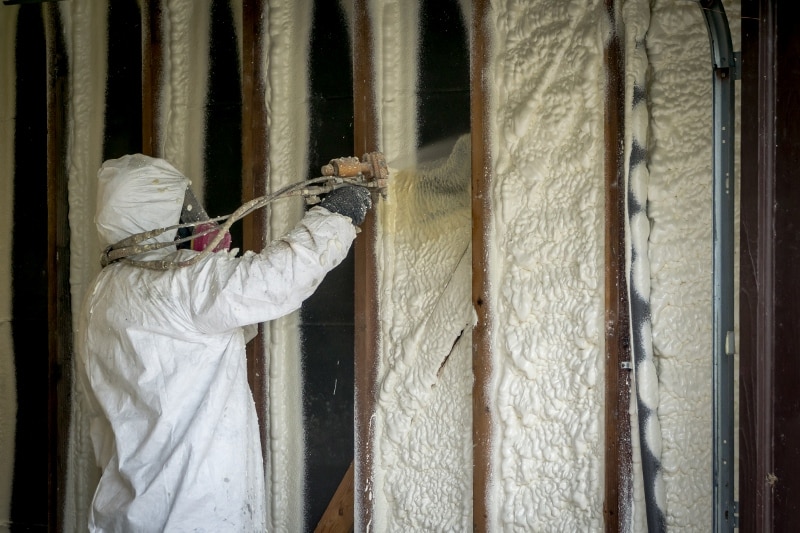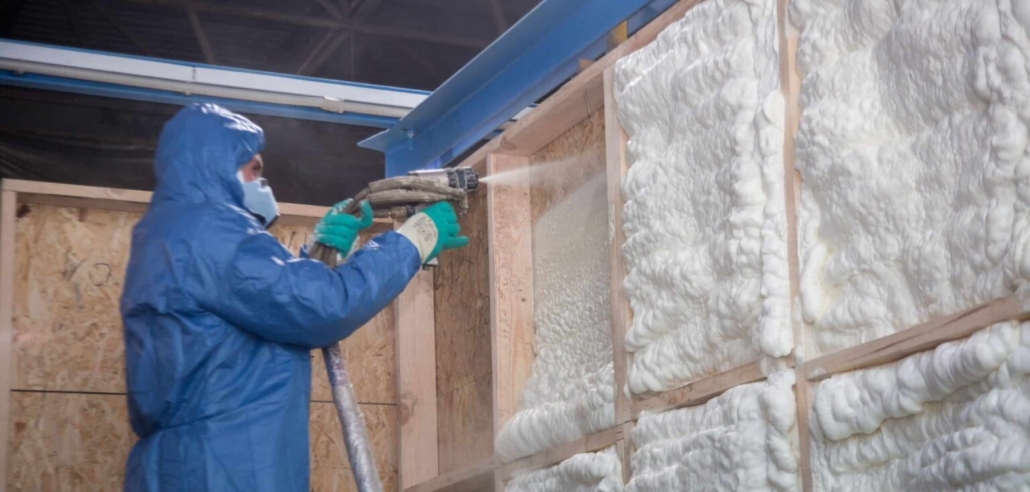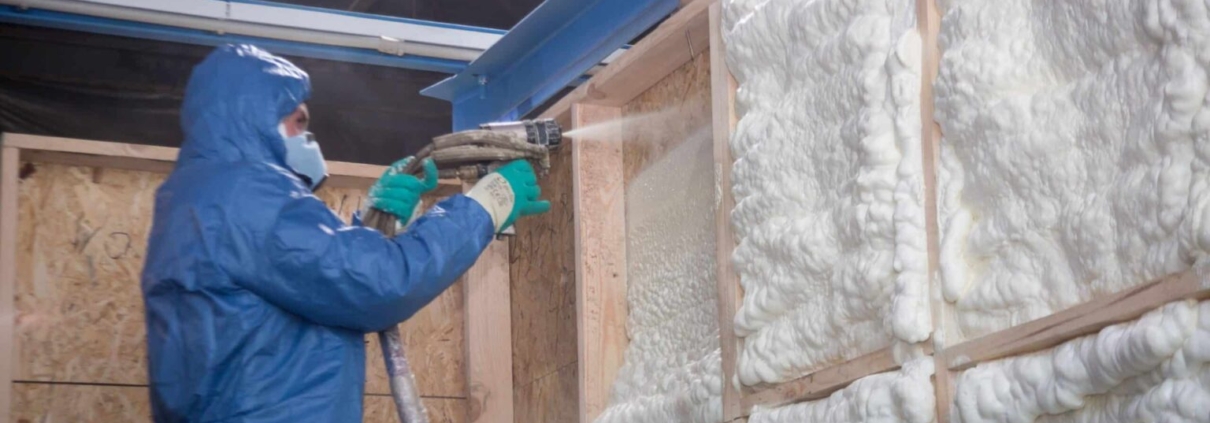Mitigating Thermal Stress in Agricultural Facilities Through Advanced Insulation
Agricultural buildings face unique challenges in maintaining consistent indoor environments. From protecting livestock from heat stress to preserving the quality of perishable crops, controlling temperature is essential. Thermal stress occurs when temperature fluctuations exceed the tolerance range of plants, animals, or stored goods. Advanced insulation plays a key role in stabilizing indoor conditions, reducing energy costs, and improving productivity in agricultural facilities. This article analyzes how insulation can mitigate thermal stress and explores the materials and strategies that deliver measurable results.
Understanding Thermal Stress in Agricultural Facilities
Thermal stress arises when agricultural environments experience significant heat gain or loss, leading to unstable conditions for livestock and stored products. Best agricultural spray foam contractor addresses this challenge by reducing heat transfer and creating a controlled indoor environment.
Effects of Thermal Stress on Livestock
Livestock exposed to extreme heat often show reduced feed intake, lower milk yields, and slower growth rates. In colder conditions, animals consume more energy to maintain body temperature, which raises feed costs. Proper insulation reduces these extremes, supporting healthier livestock and more efficient production.
Impact on Crop and Feed Storage
Stored crops, silage, and grains deteriorate quickly when exposed to uncontrolled temperature swings. Excess heat accelerates spoilage, while cold and damp conditions promote mold growth. Insulation helps keep storage areas within target ranges, reducing losses and preserving feed quality.
Energy Burden on Agricultural Operations
Facilities without proper insulation rely heavily on fans, heaters, or cooling equipment. This raises operational costs and increases the risk of system failure during peak weather conditions. Insulation reduces dependency on mechanical systems by stabilizing building envelopes naturally.

The Role of Advanced Insulation in Managing Agricultural Environments
Advanced insulation materials address both heat transfer and moisture control, making them essential in agricultural construction and retrofits.
Spray Foam Insulation in Agricultural Buildings
Spray foam offers continuous coverage that seals gaps and cracks, preventing air leakage. This reduces drafts, condensation, and heat transfer. Its durability and ability to adhere to irregular surfaces make it suitable for barns, poultry houses, and storage sheds.
Fiberglass and Mineral Wool Alternatives
Fiberglass batts and mineral wool panels remain common in farm buildings. They provide thermal resistance but require careful installation to avoid gaps. Mineral wool offers additional fire resistance, which may be critical in high-risk environments like grain storage facilities.
Reflective and Radiant Barriers
In regions with high solar gain, reflective insulation can reduce radiant heat transfer into agricultural structures. This is particularly effective in poultry houses, where solar heat buildup can quickly lead to thermal stress.
Comparing Insulation Materials for Agricultural Use
Each insulation type provides different benefits depending on the facility’s purpose. The table below outlines key differences:
| Insulation Type | Strengths | Limitations | Common Applications |
|---|---|---|---|
| Spray Foam | Air sealing, moisture control, durability | Higher installation cost | Barns, poultry houses, crop storage |
| Fiberglass Batts | Cost-effective, widely available | Susceptible to gaps and moisture | Basic walls and ceilings |
| Mineral Wool | Fire resistance, sound absorption | Heavier and less flexible | Grain storage, machinery sheds |
| Reflective Barriers | Reduces radiant heat transfer | Limited performance in cold climates | Poultry houses, greenhouses |

Moisture and Condensation Control in Agricultural Facilities
Temperature regulation is only one aspect of insulation’s role in agriculture. Moisture buildup poses risks such as mold growth, equipment corrosion, and compromised animal health.
Insulation as a Vapor Barrier
Closed-cell spray foam insulation provides both thermal resistance and vapor control. By minimizing air infiltration, it reduces condensation on surfaces where warm, humid air meets colder materials.
Preventing Mold in Feed and Crop Storage
Moisture control extends the shelf life of stored crops. Properly insulated walls and ceilings prevent condensation that leads to mold growth, which can contaminate feed supplies and reduce profitability.
Protecting Structural Longevity
Agricultural buildings exposed to constant condensation suffer premature deterioration. Insulation that manages both thermal and vapor movement helps extend building life by protecting metal and wooden components.
Designing Insulation Strategies for Agricultural Applications
Not all agricultural facilities require the same insulation approach. Design must account for use, climate, and energy code requirements.
Climate-Specific Insulation Choices
Cold climates prioritize thermal resistance to reduce heat loss, while hot climates benefit from reflective barriers and air-sealing strategies that limit heat gain. Mixed climates require balanced solutions that address both extremes.
Facility-Specific Considerations
- Livestock Housing: Focus on reducing drafts, maintaining stable temperatures, and minimizing condensation for animal health.
- Crop Storage: Insulation must limit both heat gain and moisture infiltration to preserve crops.
- Greenhouses: Requires specialized insulation that balances heat retention with natural light transmission.
Integration with Ventilation Systems
Insulation works most effectively when paired with properly designed ventilation. Together, they provide balanced temperature and humidity control without over-reliance on mechanical systems.

Common Question: How Does Insulation Improve Productivity in Agricultural Operations?
Insulation directly supports productivity by reducing losses, improving animal welfare, and lowering energy expenses. When livestock remain within their comfort zones, feed conversion improves, milk yields increase, and stress-related illnesses decrease. In crop storage, insulation prevents spoilage and maintains grain quality for longer periods. Lower energy dependence reduces costs and enhances operational resilience, ensuring agricultural businesses remain competitive.
Conclusion
Thermal stress is a significant challenge for agricultural facilities, but advanced insulation provides practical solutions. By regulating temperature, controlling moisture, and reducing reliance on mechanical systems, insulation supports healthier livestock, protects stored crops, and extends the lifespan of farm structures.
Choosing the right insulation material depends on climate, building use, and operational priorities. Spray foam delivers durability and air sealing, while mineral wool and reflective barriers provide specialized benefits. When integrated into a comprehensive design that includes proper ventilation, insulation helps agricultural facilities achieve stable, productive, and sustainable operations.
Visit us for professional assessment: https://foamworxinsulation.com/?utm_source=backlink
FAQs
What type of insulation works best for livestock barns?
Spray foam insulation is effective because it seals air leaks, reduces drafts, and controls condensation. This helps livestock maintain comfort, reducing stress and improving productivity.
Can insulation reduce mold problems in feed storage?
Yes. Insulation that prevents condensation helps reduce mold growth in stored crops and feed. Closed-cell spray foam is especially effective in controlling moisture.
Is reflective insulation useful in agricultural buildings?
Reflective barriers are useful in hot climates where solar radiation causes indoor heat buildup. They are often applied in poultry houses and greenhouses.
How does insulation lower energy costs on farms?
By reducing heat transfer, insulation decreases the need for constant heating or cooling. This lowers energy consumption and reduces long-term operating expenses.
Does insulation need to be replaced often in agricultural settings?
High-quality insulation materials, such as spray foam or mineral wool, can last decades when installed correctly. Maintenance is typically minimal compared to mechanical systems.
Reviewer: Jacob Wright has 6 years of experience in spray foam insulation. He reviewed this content and made sure it focused on the real decisions small business owners deal with every day.




Leave a Reply
Want to join the discussion?Feel free to contribute!